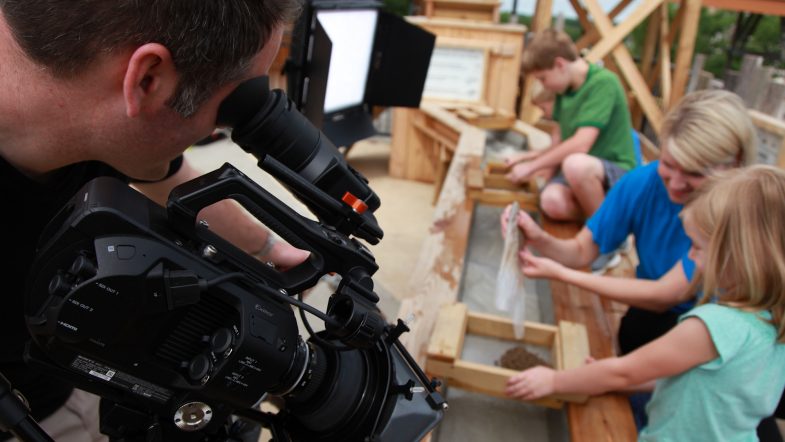For companies with limited in-house marketing resources, sometimes it’s hard to “know when to say when” to taking on a video task. As co-founder and owner of Digital Lunchbox, I’ve witnessed the “inside view” of how companies in the Branson/Springfield, Missouri region both produce and consume video. Here are some general principles that leaders, owners and marketing directors should follow when making that decision as to whether to hire out for video services or keep it in-house.
#1 – What are your in-house capabilities?
Do you have people to create these videos? Notice I said people – not robots, algorithms, or smartphones. Until you answer the people question you can’t even begin to think about the tools.
#2 – What is the purpose (and shelf life) of this video?
So case in point – I have two different clients that create video on their own for completely different reasons. One of them is my friend Craig Wescott with The Track Family Fun Parks in Branson, Missouri. Craig shoots a vlog called “What’s up Wednesdays.” We create lots of marketing pieces for The Track Family Fun Parks, including several brand essence videos (each aimed at a different target demographic) a few years back for them. However, Craig’s videos are the sort of short shelf life, immediate social content that the organization can sprinkle on social media aimed at their die-hard fans. It’s Craig, in his own voice, being Craig. A sort of an unscripted, unplugged, personal message that gives Craig the chance to talk to their fan base directly.
The second is Chateau On The Lake in Branson, Missouri. Much like The Track, we’ve recently produced a brand essence video for Chateau on the Lake. However, their sales staff creates small videos to speak to prospects for group sales with the help of consumer mobile apps – and enhanced by professional quality video footage created by Digital Lunchbox. In effect, they’re using video in the same manner as instant messaging or an email – a way to communicate with a prospect in a visual, personal way and say “happy birthday” or “congrats on the promotion”. These are just a couple of ways that businesses use low-cost video, they create it internally and it works within the context of what they’re trying to do.
#3 -Final Solution, or Just A Prototype?
Is this video that you’re planning an ultimate solution, or is it just a prototype of maybe something you want to do in the future? Prototyping can be a great way to get a lay of the land and figure out whether or not you have the resources to create a video on your own or if you need to enlist the help of professionals.
Capture pictures with a smartphone or re-purpose preexisting professional photos to create storyboards. Map out what you would do with a video – if your organization spent money on a video. In fact, these aren’t dissimilar to kind of things that a video production company does in the pre-production phase of creating a video.
What’s the downside? Time. Not everyone has the bandwidth to experiment in-house with a video.
Benefits of outsourcing a professional video production team
So what are the enhanced capabilities of a video production professional? What can a professional do that perhaps your in-house team can’t? Here’s a hint…
It’s not about cameras.
Remember: video is storytelling. People tell stories, not devices. An outsourced video producer should help you create higher quality videos more effectively than you can create on your own. They should be able to coordinate modeling talent and shooting locations if that’s needed. If you don’t have an agency or if this is a project that for whatever reason you place outside the scope of your agency, then the video producer should be able to assist you with your script and help you hone your concept.
At Digital Lunchbox, we work in that capacity quite often providing more than just crew and cameras. We provide creative assistance – It’s an environment we thrive in.






